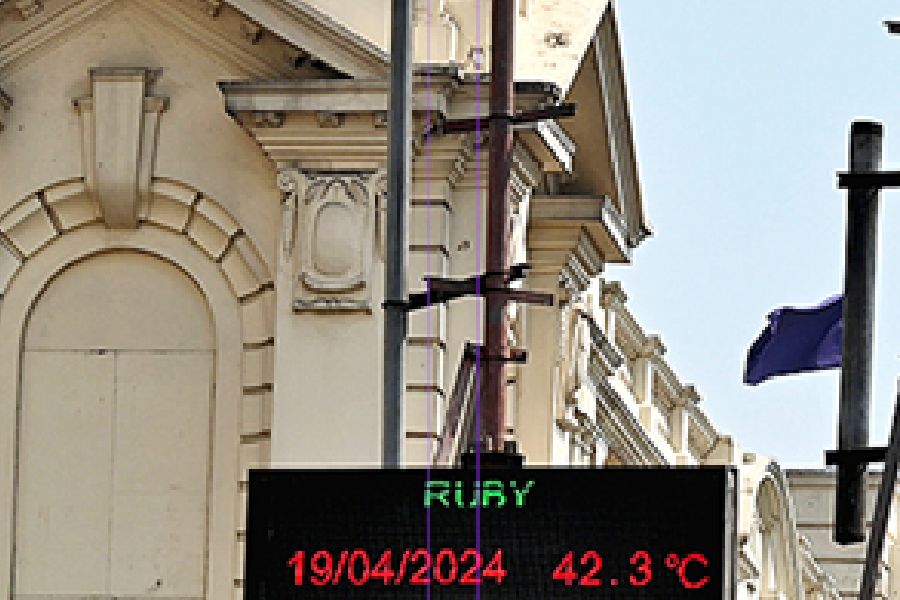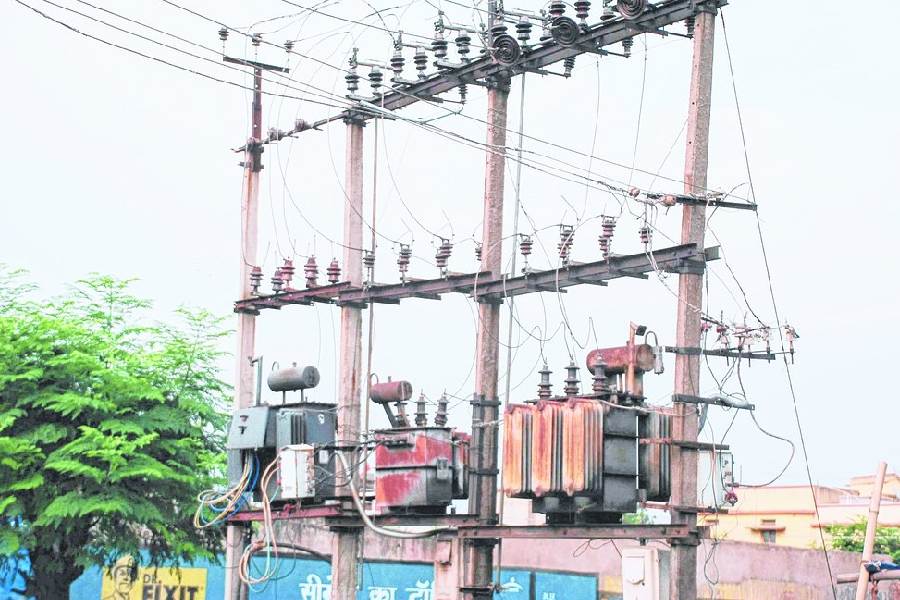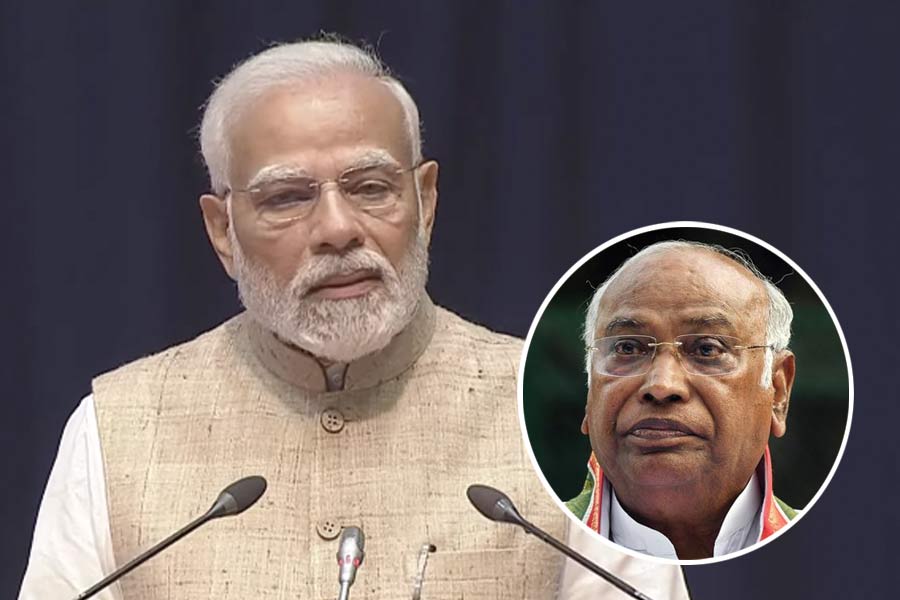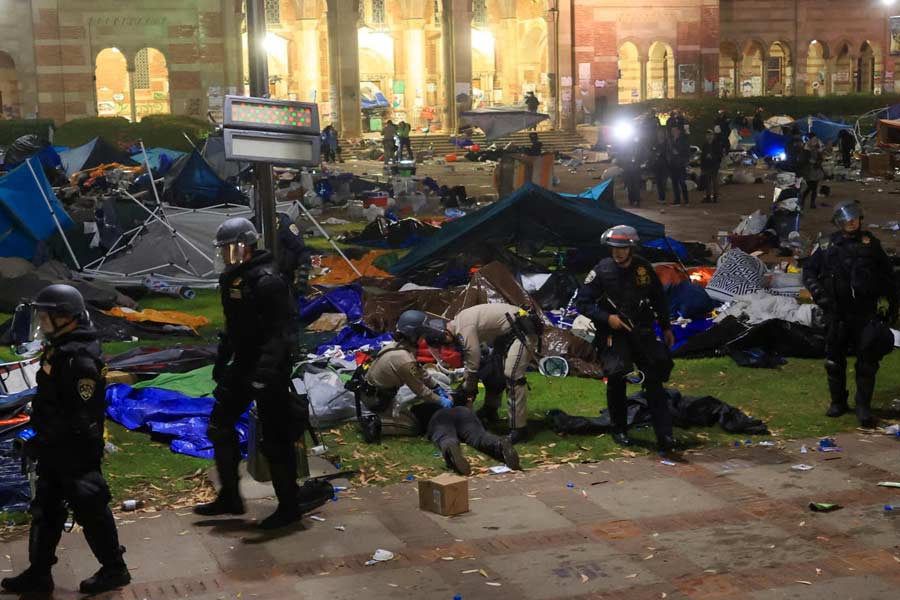The maximum temperature climbed to 40.8 degrees in Calcutta on Friday, as recorded by the Alipore Met office.
Around 2.05pm, a display board at the exit of Esplanade Metro station showed a reading of 42.3 degrees.
At 2.24pm, the phone showed 40 degrees at the Gariahat intersection, about 5km away.
The city’s maximum temperature, on paper, was the Met reading at Alipore. But Metro saw two more temperature readings at two other places, all in the afternoon.
The city did not look anything like a usual workday.
The number of pedestrians could be counted on the palm at Gariahat. It looked even less at Esplanade’s Dorina crossing. Vehicles were few and shops were in slumber.
Snippets from a scalded city:
Heat-island effect
Punarbasu Chaudhuri, associate professor in the department of environmental sciences at Calcutta University, attributed the difference in the temperature readings to the “heat-island effect”.
An urban heat island is a metropolitan area that is significantly warmer than other areas because of concrete density and dwindling greenery and water bodies, among other factors.
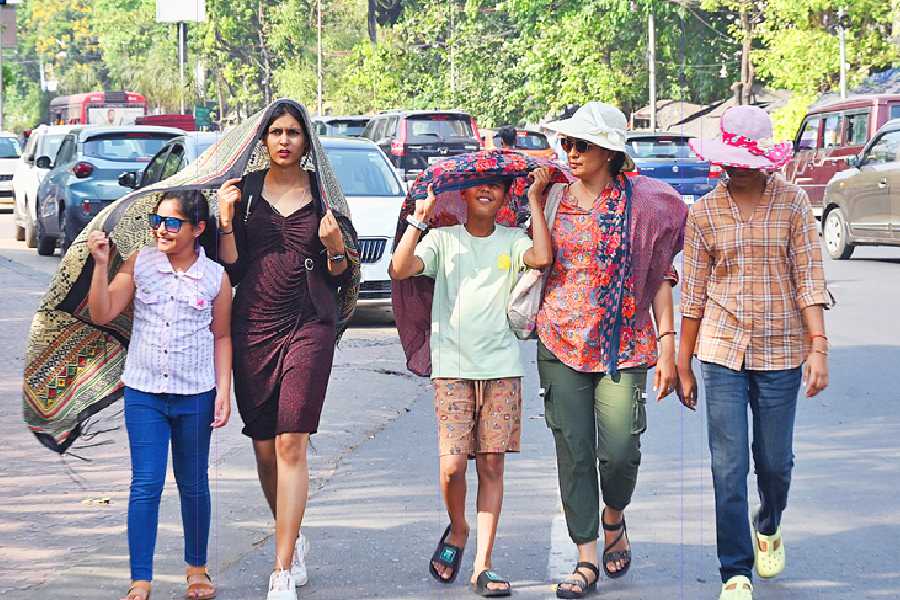
Pedestrians shield themselves from the sun on JL. Nehru Road on Friday afternoon. Pradip Sanyal
The elevated temperatures result from the heat trapped by the excessive occurrence of concrete surfaces in cities as well as the waste heat generated by machines.
The days are likely to get hotter in Calcutta. The Celsius is likely to climb to 42 degrees by Sunday, said a Met official.
Intermittent thunderstorm activities are likely in some districts on April 22 and 23 but Calcutta is not among them, the Met office said.
Missing cars
Around 2pm, only four cars were parked along the Gariahat-bound flank of Rashbehari Avenue. Usually, there are scores and it is difficult to find an empty parking space near the intersection.
“Most of the cars belong to people who come here for shopping or other occasional purposes. People are hardly stepping out in this heat,” said a parking attendant.
At 2.10pm, just 15-odd vehicles, mostly small cars, a mini-truck and a government bus, crossed the Gariahat intersection when the lights turned green. On a usual afternoon, the number of vehicles on the same stretch would be close to 50, traffic cops on the stretch said.
Over the past few days, as the mercury crept up, the vehicle count dropped after noon, said a constable on Rani Rashmoni Avenue in Esplanade.
Help at hand
A woman crossing the road was carrying an umbrella and had her entire face covered in a dupatta. She was stopped in her tracks by another woman and offered a batasha (a local sweet made of sugar and jaggery) and drinking water. The pedestrian smiled and had both.
Right under the Gariahat flyover, a group of people distributed sweets and water. A series of plastic glasses were filled from two water filters and stacked up on a table after every five minutes.
Most people passing by stopped at the table and drank a glass. Two women stood on the road, distributing the sweets and water to bikers, autorickshaw drivers and motorists. “We do this every year,” said one of the organisers.
Slump in sale
The pavements dotted with hawkers were largely empty. “Bouni hoy ni dada (I am yet to make the first sale of the day),” a man selling bed and pillow covers said around 2.30pm on Friday.
The man who lives in Baruipur, on the southern fringes of Calcutta, reaches Gariahat around 10.15am and opens shop by 10.30am.
Caps and cotton clothes, especially for children, were items that were still in some demand, said traders at Esplanade.

